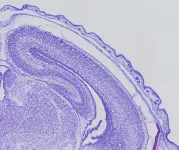Ischemic strokes account for 87% of strokes in the United States. An ischemic stroke occurs when blood flow in a vessel leading to the brain is blocked, by either clots or plaques. Strokes can lead to serious disability and/or death. A transient ischemic attack, commonly referred to as a TIA, occurs when an artery is blocked for a short amount of time; thus, the blockage is transient (temporary) and does not cause permanent brain injury.
As prevention strategies have improved, studies have noted a reduction in recurrent stroke rates from 8.7% in the 1960s to 5.0% in the 2000s. Yet many risk factors for a second stroke remain poorly managed among stroke survivors.
A new recommendation of the "2021 Guideline for the Prevention of Stroke in Patients With Stroke and Transient Ischemic Attack" is for health care professionals to perform diagnostic evaluations to determine the cause of the first stroke or TIA within 48 hours of symptom onset. The guideline includes a section outlining treatment recommendations based on the cause of the initial stroke/TIA. Underlying causes could be related to blockages in large arteries in the neck or brain, small arteries in the brain damaged from high blood pressure or diabetes, irregular heart rhythms and many other potential causes.
"It is critically important to understand the best ways to prevent another stroke once someone has had a stroke or a TIA," said Dawn O. Kleindorfer, M.D., FAHA, chair of the guideline writing group, and professor and chair of the department of neurology at the University of Michigan School of Medicine in Ann Arbor, Michigan. "If we can pinpoint the cause of the first stroke or TIA, we can tailor strategies to prevent a second stroke."
For patients who have survived a stroke or TIA, the secondary prevention guidelines recommend:
Managing their vascular risk factors, especially high blood pressure, as well as Type 2 diabetes, cholesterol, triglyceride levels and not smoking. Limiting salt intake and/or following a Mediterranean diet. If they are capable of physical activity, engaging in moderate-intensity aerobic activity for at least 10 minutes four times a week or vigorous-intensity aerobic activity for at least 20 minutes twice a week. "In fact, approximately 80% of strokes can be prevented by controlling blood pressure, eating a healthy diet, engaging in regular physical activity, not smoking and maintaining a healthy weight," said Amytis Towfighi, M.D., FAHA, vice-chair of the guideline writing group, and director of neurological services at the Los Angeles County Department of Health Services.
For health care professionals, the updated treatment recommendations highlighted in the guideline include:
Using multidisciplinary care teams to personalize care for patients and employing shared decision-making with the patient to develop care plans that incorporate a patient's wishes, goals and concerns. Screening for and diagnosing atrial fibrillation (an irregular heart rhythm) and starting blood-thinning medications to reduce recurrent events. Prescribing antithrombotic therapy, including antiplatelet medications (blood thinners) or anticoagulant medications (to prevent blood clotting), for nearly all patients who don't have contraindications. However, the combination of antiplatelets and anticoagulation is typically not recommended for preventing second strokes, and dual antiplatelet therapy, taking aspirin along with a second medicine to prevent blood clotting, is recommended short-term, only for specific patients: those with early arriving minor stroke and high-risk TIA or severe symptomatic stenosis. Carotid endarterectomy, surgical removal of a blockage or, in select cases, the use of a stent in the carotid artery, should be considered for patients with narrowing arteries in the neck. Aggressive medical management of risk factors and short-term dual anti-platelet therapy are preferred for patients with severe intracranial stenosis thought to cause the stroke or TIA. In some patients, it is now reasonable to consider percutaneously closing (a less invasive, catheter-based surgical procedure) a patent foramen ovale, a small and fairly common heart defect. The guideline is accompanied by a systematic review article, published simultaneously, "Benefits and Risks of Dual Versus Single Antiplatelet Therapy for Secondary Stroke Prevention." The review paper, chaired, by Devin L. Brown, M.D., M.S., is a meta-analysis of three short-duration clinical trials on dual antiplatelet therapy (DAPT) and concludes DAPT may be appropriate for select patients. The review authors note: "Additional research is needed to determine: the optimal timing of starting treatment relative to the clinical event; the optimal duration of DAPT to maximize the risk-benefit ratio; whether additional populations excluded from POINT and CHANCE [two of the trials examined], such as those with major stroke, may also benefit from early DAPT; and whether certain genetic profiles eliminate the benefit of early DAPT."
"The secondary prevention of stroke guideline is one of the American Stroke Association's 'flagship' guidelines, last updated in 2014," Kleindorfer added. "There are also a number of changes to the writing and formatting of this guideline to make it easier for professionals to understand and locate information more quickly, ultimately greatly improving patient care and preventing more strokes in our patients."
INFORMATION:
The guideline was prepared on behalf of and approved by the American Heart Association Stroke Council's Scientific Statements Oversight Committee on Clinical Practice Guidelines. The writing group included representatives from the American Heart Association/American Stroke Association and the American Academy of Neurology, and consisted of experts in the field, including neurologists, neurological surgeons, cardiologists and internists, as well as a lay/patient representative. The guideline is endorsed by the American Association of Neurological Surgeons/Congress of Neurological Surgeons and the Society of Vascular and Interventional Neurology. Additionally, it is affirmed by the American Academy of Neurology as an educational tool for neurologists.
Other members of the guideline writing group are Seemant Chaturvedi, M.D., FAHA; Kevin M. Cockroft, M.D., M.Sc., FAHA; Jose Gutierrez, M.D., M.P.H.; Debbie Lombardi-Hill, B.S., FAHA; Hooman Kamel, M.D.; Walter N. Kernan, M.D.; Steven J. Kittner, M.D., M.P.H.; Enrique C. Leira, M.D., M.S., FAHA; Olive Lennon, Ph.D.; James F. Meschia, M.D.; Thanh N. Nguyen, M.D.; Peter M. Pollak, M.D.; Pasquale Santangeli, M.D., Ph.D.; Anjail Z. Sharrief, M.D., M.P.H.; Sidney C. Smith Jr., M.D., FAHA; Tanya N. Turan, M.D., M.S., FAHA; and Linda S. Williams, M.D., FAHA. Author disclosures are listed in the manuscript.
Additional Resources:
Available multimedia is on right column of release link - https://newsroom.heart.org/news/risk-of-second-stroke-can-be-reduced-with-prevention-efforts-based-on-cause-of-first-stroke?preview=2f8edbdb4e55ff77564019da7091fbd3
The Association receives funding primarily from individuals. Foundations and corporations (including pharmaceutical, device manufacturers and other companies) also make donations and fund specific Association programs and events. The Association has strict policies to prevent these relationships from influencing the science content. Revenues from pharmaceutical and biotech companies, device manufacturers and health insurance providers are available here, and the Association's overall financial information is available here.
About the American Heart Association
The American Heart Association is a relentless force for a world of longer, healthier lives. We are dedicated to ensuring equitable health in all communities. Through collaboration with numerous organizations, and powered by millions of volunteers, we fund innovative research, advocate for the public's health and share lifesaving resources. The Dallas-based organization has been a leading source of health information for nearly a century. Connect with us on heart.org, Facebook, Twitter or by calling 1-800-AHA-USA1.


